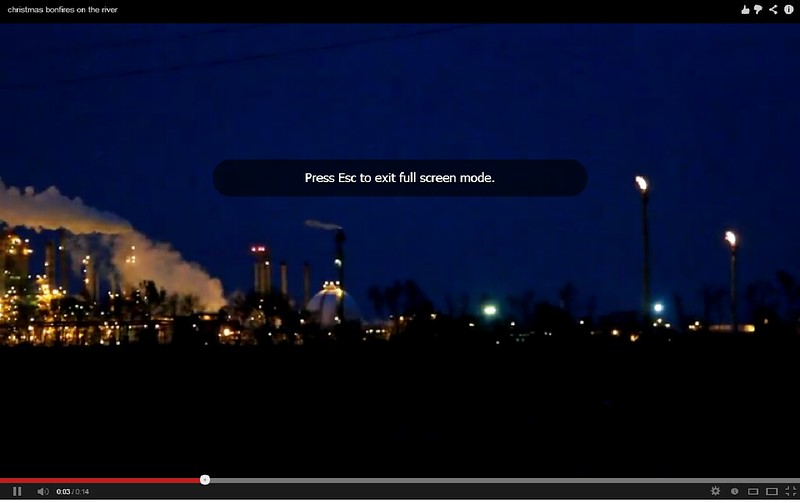inspired by Jetson's post
Do we need the scope for distance spectrometry? is that going to help limit what light enters the box?
What about a telescope rather than a gun scope?
Does the flare produce the kind of light appropriate to long-distance spectrometry? i.e. flame spec rather than adsorption spec?
Should we target the flare at night so that the light hitting our spectrometer is more exclusively from the flare?
Side Note: about half the time, Cancer alley residents can use the skytruth alert system to be notified of flaring events / cross reference them to see what the companies are admitting to releasing. This is a national alert system, and i would think that refineries in other areas would be more diligent about reporting, in case there are other refinery communities in the US that want to target the flare stacks with the spectrometer. alerts.skytruth.org
Here's the latest from Shell Motiva, as an example. http://alerts.skytruth.org/report/c830082d-0664-31b7-8a62-8f051e4ca958#c=rss
Let's consider some photos and videos taken of flare stacks from distance.
Here is Marathon from the highway at dusk. you can see the flares on the right, some minor flare stacks mixed in with the massive array of halogens. [click for video]

by contrast, here's what flaring looks like during the day. (conoco phillips / alliance / phillips 66 looking east from hwy 23) https://www.flickr.com/photos/eustatic/6343045878/
 Flaring
Alliance refinery, conoco phillips
Flaring
Alliance refinery, conoco phillips
2 Comments
I would think that you should try to just use the grating (DVD) without the slit and see what it looks like. The image may be post processed to provide a usable spectrum. Let us know what you come up with.
http://www.skyandtelescope.com/resources/proamcollab/3307266.html?page=2&c=y may give you some ideas on how to proceed.
Is this a question? Click here to post it to the Questions page.
Reply to this comment...
Log in to comment
I captured a street lamp about 150 yards away using a webcam with a DVD-R+ taped over the lens without a slit. I used a 4" magnifying glass to focus the streetlight on the camera lens. The camera still needed to be aimed at a 45 degree angle away form the light source. The image is far from perfect, no focus or calibration was done, but it shows promise. http://publiclaboratory.org/notes/jetson/1-27-2013/attempt-distance-spectrometery#comment-3333
Reply to this comment...
Log in to comment
Login to comment.